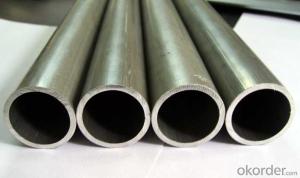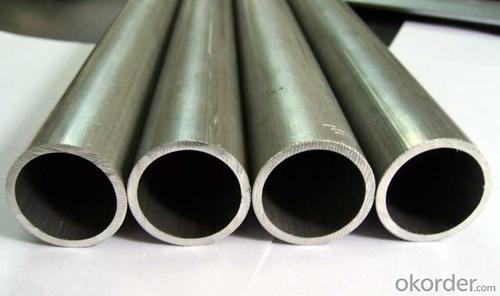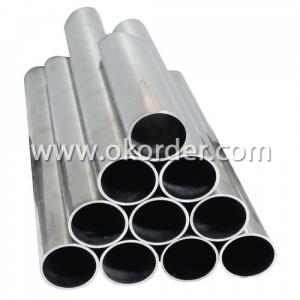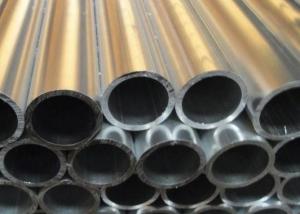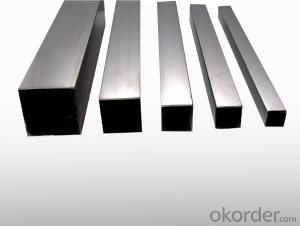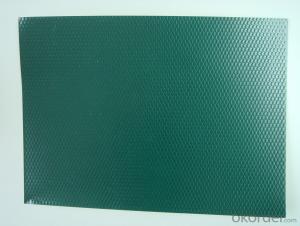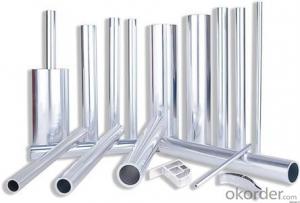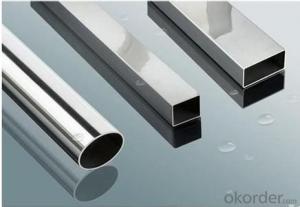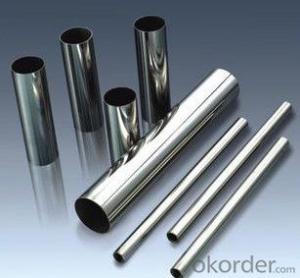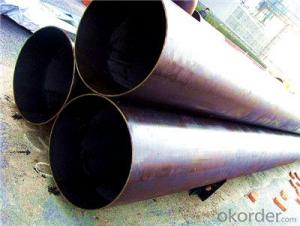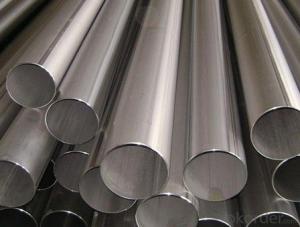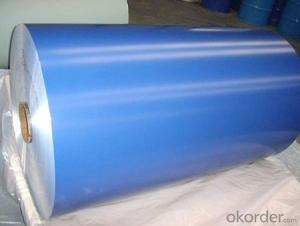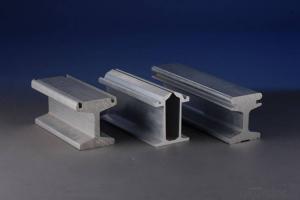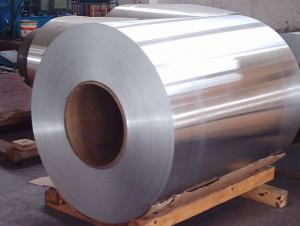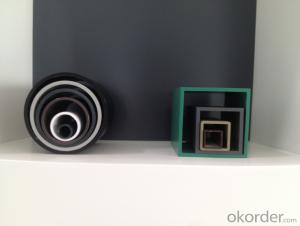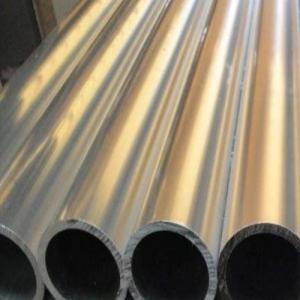Aluminum Pipes - Aluminum Seamless Tube Alloy 5000
- Loading Port:
- China Main Port
- Payment Terms:
- TT OR LC
- Min Order Qty:
- -
- Supply Capability:
- -
OKorder Service Pledge
Quality Product, Order Online Tracking, Timely Delivery
OKorder Financial Service
Credit Rating, Credit Services, Credit Purchasing
You Might Also Like
Specification of aluminum tube/pipe
Alloy: | 2A12, 2014, 2014A, 2017A, 2024, 3003, 5005, 5754, 5083, 7020, 7075 etc |
Temper: | O F T3-T6 |
Out diameter: | 15-220mm |
Wall thickness: | 1.0-60mm |
Length: | 6000mm or as need |
We can provide a full range services including: extrusion, anodizing, machining . we produce aluminium extrusions, aluminum tube, seamless aluminum tube, aluminum bar, aluminum angle, aluminum channels, and industry profiles, in a wide range of commercial alloys, including 1050, 1200, 2A12, 2014, 2014A, 2017A, 2024, 3003, 5083, 6005A, 6060, 6061, 6063, 6063A, 6082, 6463, 7020, 7075 subject to temper requirements and product specification.
Aluminium profiles(classifcation according to surface treatment requirements)
1,Anodizing profiles
2,Electrophresis profiles
3,Powder coating profiles
4,Wood finish profiles
5,Polished profiles
6,PVDF coating profiles
- Q: What are the different pressure testing standards for aluminum pipes?
- There are several pressure testing standards that are commonly used for aluminum pipes. Some of the most widely recognized standards include: 1. ASTM B-241: This standard is specific to aluminum-alloy seamless pipe and is used to determine the pressure capabilities of the pipe under various conditions. It provides guidelines for testing the pipe's strength, thickness, and ability to withstand internal and external pressures. 2. ASME B31.3: This standard is part of the American Society of Mechanical Engineers (ASME) code for process piping. It provides requirements and guidelines for the design, fabrication, inspection, and testing of aluminum pipes used in various industries. It includes specific pressure testing procedures and acceptance criteria for aluminum pipes. 3. ISO 6892: This standard is an international standard that outlines the testing methods for metallic materials, including aluminum. It includes procedures for determining the mechanical properties of aluminum pipes, including tensile strength, yield strength, and elongation. While not specifically focused on pressure testing, it provides valuable information on the overall strength and performance of aluminum pipes. 4. MIL-PRF-6855: This military standard specifies the requirements for rubber and polyurethane hoses used in aircraft fuel systems. While not exclusively for aluminum pipes, it includes pressure testing standards and criteria that are applicable to aluminum pipes used in aviation applications. It is important to note that these are just a few of the commonly used pressure testing standards for aluminum pipes. Depending on the specific application and industry, there may be additional standards or guidelines that need to be followed. It is always recommended to consult the relevant industry standards and codes to ensure compliance with specific pressure testing requirements.
- Q: Are aluminum pipes lightweight?
- Yes, aluminum pipes are lightweight.
- Q: Can aluminum pipes be used for solar panel installations?
- Certainly, solar panel installations can utilize aluminum pipes. Aluminum is widely preferred in mounting structures for solar panels because of its lightweight nature, resistance to corrosion, and durability. Frequently, aluminum pipes are employed in constructing the framework or support structures of solar panels, ensuring stability and strength while minimizing the system's overall weight. Furthermore, aluminum is an economical material, which is why it is favored by numerous solar panel installers.
- Q: Can aluminum pipes be used for irrigation pivot systems?
- Yes, aluminum pipes can be used for irrigation pivot systems. Aluminum is a popular choice for irrigation systems due to its lightweight nature, corrosion resistance, and durability. Aluminum pipes are easy to handle and install, making them suitable for pivot systems that require flexibility and easy maneuverability. Additionally, aluminum pipes have a long lifespan and can withstand harsh weather conditions, making them a reliable choice for irrigation pivot systems. However, it is important to consider the specific requirements of the irrigation system and consult with experts to ensure that the chosen materials, including aluminum pipes, are suitable for the specific application.
- Q: The aluminum pipe joint on the unit is broken. Take a look at it. There is a copper ring on the aluminum tube. I don't know how it was pressed. Do you know any friend here? What equipment do you need to press up? Do you have any manual equipment? A friend who knows is better illustrated with a picture. Thank youThank you friends reply, but you're wrong, the copper ring is pressed up and see what this is the copper ring on both sides of the copper ring is a device pressure to take off the copper ring in the aluminum tube plays the role of sealing
- Sold together, the nut is cracked Cut off the copper ring and replace it with a copper ring and nutGeneral pneumatic tools or hydraulic parts are sold at the storeI've used it.
- Q: Are aluminum pipes affected by exposure to fire or flames?
- Yes, aluminum pipes are affected by exposure to fire or flames. Aluminum is a non-combustible material, meaning it does not catch fire or burn on its own. However, when exposed to high temperatures, aluminum pipes can still be affected by the intense heat. Aluminum has a low melting point of around 660 degrees Celsius (1220 degrees Fahrenheit), so it can start to soften and deform under the extreme heat of a fire. This can lead to structural damage and compromise the integrity of the pipes, potentially causing leaks or failure. Therefore, it is important to take precautions and protect aluminum pipes from direct exposure to fire or flames to ensure their longevity and functionality.
- Q: Freezer aluminium tube can be used for several years
- Now the refrigerator tube is using aluminum tube or Bondi tube (Bondi tube, that is galvanized steel pipe, in fact, the iron pipe, iron pipe above the paint once lost, it is easy to rust..)
- Q: What are the different diameters available for aluminum pipes?
- The diameters available for aluminum pipes can vary depending on the manufacturer and specific requirements. However, aluminum pipes commonly come in a range of diameters starting from as small as 0.25 inches (6.35 mm) and going up to larger sizes such as 12 inches (304.8 mm) or even more. The specific diameter options available may also depend on the intended use of the aluminum pipes, as different industries and applications may require specific sizes. It is always best to consult with the manufacturer or supplier to determine the exact range of diameters available for aluminum pipes that meet your specific needs.
- Q: Is the air conditioner aluminum tube or copper tube?
- Copper, of course. Copper has shrinkage, ductility, and high prices
- Q: How can I bend an aluminum tube into an oval shape?What is the best solution?What is the most economical solution?ThanksIn the ordinary bending machine, it is feasible to change the arc in order to change the radius from the radius to the short axis firstSo, the whole pipe can only be bent into ellipses with more clamps?
- Draw the ellipse you need on the ground. Look for a fixed point on the ground, a little bit bent
Send your message to us
Aluminum Pipes - Aluminum Seamless Tube Alloy 5000
- Loading Port:
- China Main Port
- Payment Terms:
- TT OR LC
- Min Order Qty:
- -
- Supply Capability:
- -
OKorder Service Pledge
Quality Product, Order Online Tracking, Timely Delivery
OKorder Financial Service
Credit Rating, Credit Services, Credit Purchasing
Similar products
Hot products
Hot Searches
Related keywords
